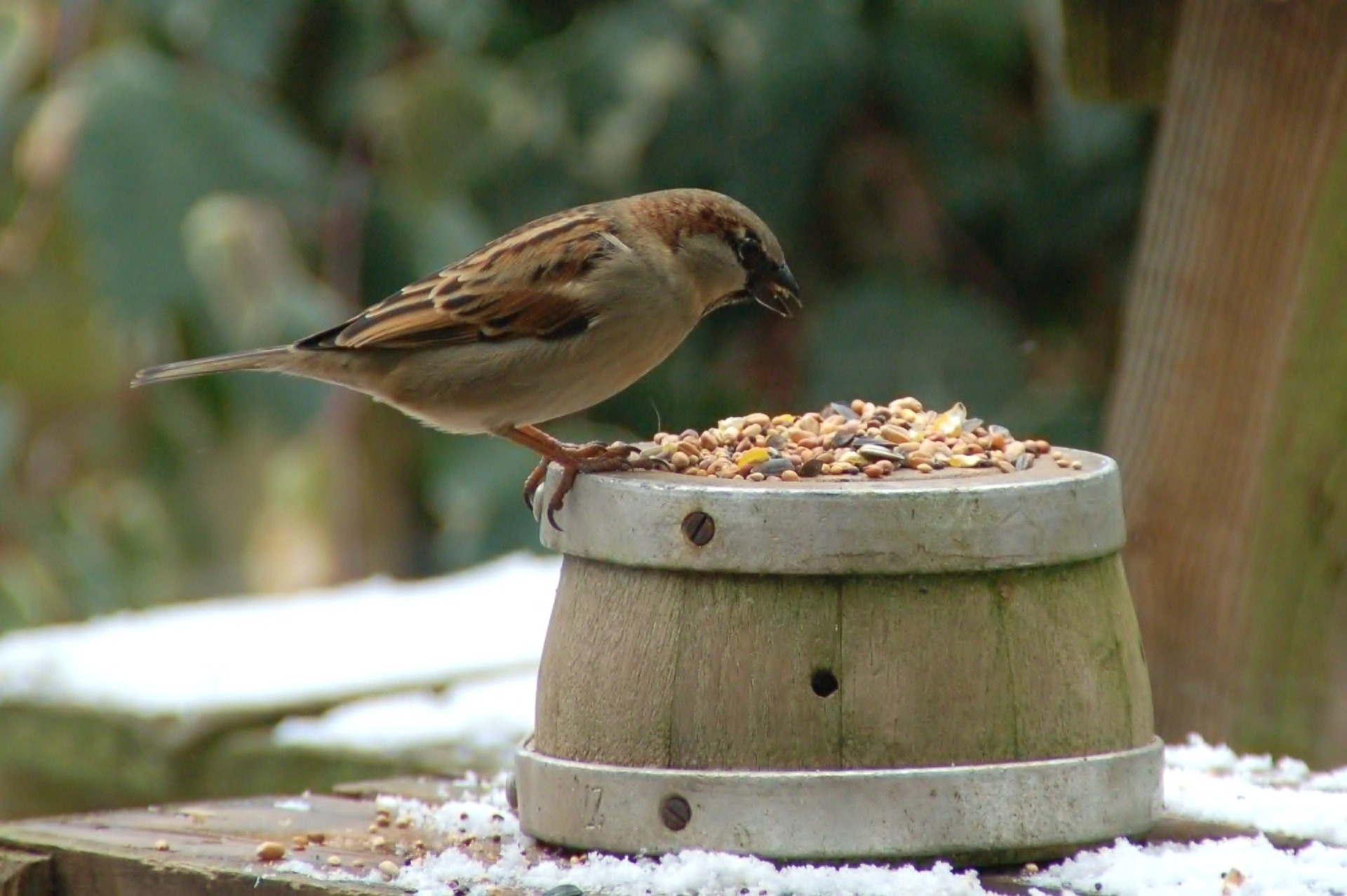Many people are dieting as their New Year’s resolution for 2020, but do you know what it really means to “eat like a bird”? You might be surprised to hear that some wild birds actually eat twice their weight in food each day! Here are some more interesting facts about our feathered friends’ eating habits:
What Bird Seed Attracts What Birds
Chirp Nature Center is a proud member of the Wild Bird Feeding Industry, and their feeding chart is very helpful when deciding which bird seed to buy for the birds in your area:

And, if you live in Southern California, check out our Southern California Suet Guide to find out which birds eat suet in your area.
How Bird Diets Change with the Seasons

The bird diet changes over the course of the year, as every season and part of a bird’s lifecycle requires a different type of sustenance. The best example of this is in winter, when wild birds are looking for food with a high source of energy, like suet, to help them get through the cold months. This is why winter bird feeding is so important, especially in snowy places like Big Bear Lake.
During spring, birds have migrated from their winter homes and are often depleted from the trip. On top of this, they must think about mating, nesting, and looking for food for themselves and their offspring. All of this takes precious energy, and their food sources are still scarce as new plant growth is just starting to appear, which is why it’s as important to feed birds during spring as it is during winter.
Suet is a high-energy food that you can feed birds during spring (as well as other seasons) to help them replenish their energy resources; it can be offered if the weather is not too warm, which will cause it to spoil. Fruit, mealworms, seed, and nectar are also good choices for bird feeding during spring, though it’s best to consult a list of your local birds and the types of foods they eat.
In summer, food sources are more readily available, and so you may not see as many birds at your bird feeders. When they do come, they will most likely be with the whole family, teaching their young ones to feed. You can feed them any type of quality birdseed at this time, and throw in some fruit slices as a treat. Apples, oranges, and bananas are some bird favorites.
Water is also important, to prevent dehydration while the weather is hot. Providing a birdbath is a great way to ensure that birds have a place to drink and cool off. And don’t forget a non-frozen water source during the winter.
Come fall, and many migrating birds are making pit stops at feeders along their long routes, looking for foods that are rich in fatty oils and high in calories to sustain them. Suet, peanuts, black oil sunflower seeds, and Nyjer seed are all great offerings.
More Interesting Bird Feeding Facts

- Hummingbird feeders are red because hummingbirds have learned that red flowers typically hold the most nectar
- Orioles eat fruit by stabbing their bill into the soft part and then opening their mouths to cut into the fruit and drink its juice
- Many birds, like woodpeckers, love grape jelly
- When looking for or eating food, birds tend to ignore anything that is green
- Birds only get about 25% of their food from bird feeders; the rest they find in the wild
- In the 1950s, a group of European songbirds called the blue tits were following milk delivery trucks and stealing milk by piercing the bottle tops with their beaks
- Bassian thrushes flush out earthworms by flatulation; when the burst of gas makes the worms stir, these birds grab them and eat them
- Eggshells are a good source of calcium for female bird during nesting season—however, be sure to wash and bake them to kill any germs before putting them out for feeding
- Woodpeckers store nuts like acorns and almonds in hollow portions of trees—so all that noisy drilling is for a reason!
- Birds eat a ton of insects—Baltimore orioles can eat 17 caterpillars a minute while a house wren can eat 500 spiders in one day!
- What a bird eats depends on its beak: for example, birds with hooked beaks use them to kill animals and eat their meat, whereas birds with cone-shaped beaks (such as grosbeaks) have the perfect tool for cracking open and eating nuts and seeds

Help Chirp Feed the Birds
Whether you’re interested in joining our initiative to feed the winter birds, or you have a question about bird feeding, we at Chirp Nature Center want to help. Ask us in person when you visit us at the center, email us at help@chirpforbirds.com or call us at (888) 412-4477.


